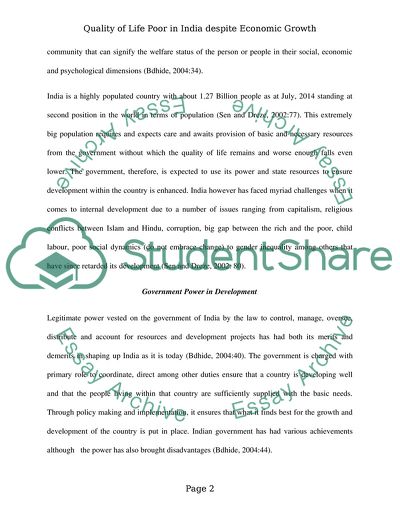Cite this document
(Poor Life in India despite Economic Growth Dissertation, n.d.)
Poor Life in India despite Economic Growth Dissertation. Retrieved from https://studentshare.org/social-science/1855613-critically-assess-why-india-despite-its-good-economic-growth-its-performance-to-improve-the-quality-of-life-as-measured-by-standard-social-indicators-has-been-mediocre
Poor Life in India despite Economic Growth Dissertation. Retrieved from https://studentshare.org/social-science/1855613-critically-assess-why-india-despite-its-good-economic-growth-its-performance-to-improve-the-quality-of-life-as-measured-by-standard-social-indicators-has-been-mediocre
(Poor Life in India Despite Economic Growth Dissertation)
Poor Life in India Despite Economic Growth Dissertation. https://studentshare.org/social-science/1855613-critically-assess-why-india-despite-its-good-economic-growth-its-performance-to-improve-the-quality-of-life-as-measured-by-standard-social-indicators-has-been-mediocre.
Poor Life in India Despite Economic Growth Dissertation. https://studentshare.org/social-science/1855613-critically-assess-why-india-despite-its-good-economic-growth-its-performance-to-improve-the-quality-of-life-as-measured-by-standard-social-indicators-has-been-mediocre.
“Poor Life in India Despite Economic Growth Dissertation”, n.d. https://studentshare.org/social-science/1855613-critically-assess-why-india-despite-its-good-economic-growth-its-performance-to-improve-the-quality-of-life-as-measured-by-standard-social-indicators-has-been-mediocre.


